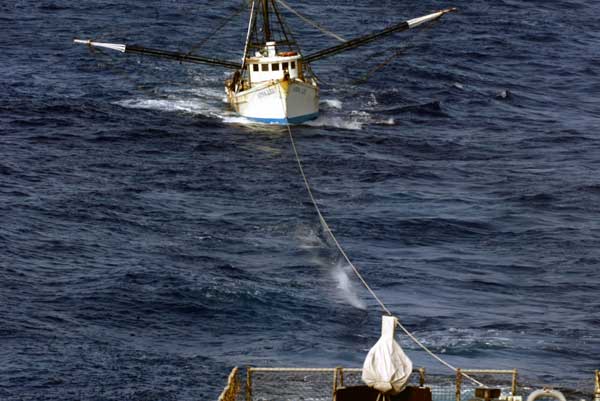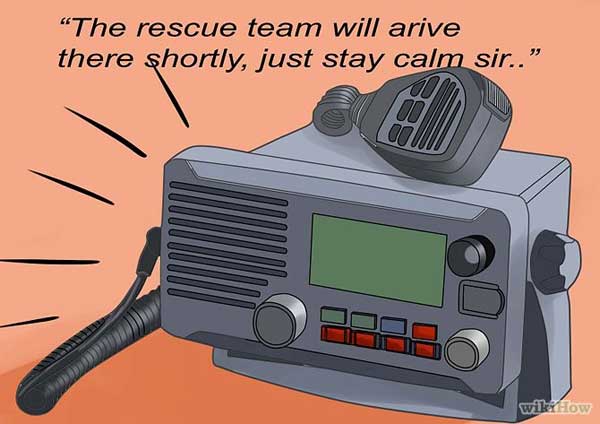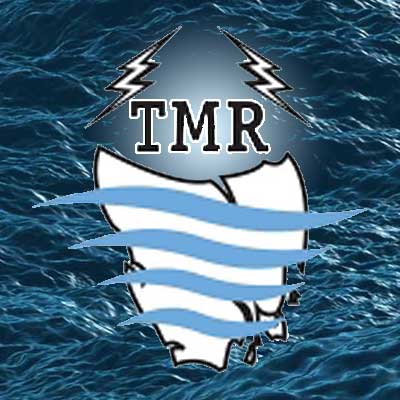
Helping Others
How to help someone else in distress.
Vessel owners are required to assist other vessels in distress if they can do so. This section shows how you should respond to a Mayday or Pan Pan, and how to send Securité safety messages.
Responding to a Mayday

If you hear a Mayday follow this procedure:
| • If you are in radio range of a limited coast station such as Tas Maritime Radio, allow them time to acknowledge the Mayday because they are in the best position to coordinate rescue activity. They may call for assistance from vessels in the vicinity in which case you may respond if you are close to the vessel in distress. | ||
| • If you do not hear a response from a limited coast station and you are in the immediate vicinity of the vessel distress, acknowledge the Mayday, as below: | ||
| 1. The distress signal Mayday; | ||
| 2. The name and callsign of the vessel sending the Mayday, stated 3 times; | ||
| 3. The words “this is”; | ||
| 4. Your name and callsign, stated 3 times; | ||
| 5. The word “received”; | ||
| 6. The distress signal Mayday; | ||
Following this transmit your position, speed and your ETA at the vessel in distress. Direct them to remain on the same channel or frequency (you don't want to risk losing communication with them).
Mayday Relay
If you become aware of a vessel in distress warranting a Mayday call and you do not hear one (their radio may be out of service for some reason), you can transmit a distress message on their behalf. This is called a Mayday Relay. The format is this:
| 1. The distress relay signal Mayday Relay, spoken 3 times; | |
| 2. The words “this is”; | |
| 3. Your vessel’s name and callsign, spoken 3 times; | |
| 4. The words “Mayday Relay” followed by the name and position of the vessel in distress, the nature of the distress and other pertinent information, followed by “Over”. |
A similar example may occur if you hear a Mayday that is not acknowledged and you are too far away to provide assistance. In this case you transmit a Mayday Relay to attract the attention of stations that may be unable to hear the vessel in distress but may be able to hear you.
| 1. The distress relay signal Mayday Relay, spoken 3 times; | |
| 2. The words “this is”; | |
| 3. Your vessel’s name and callsign, spoken 3 times; | |
| 4. The original Mayday message, concluding with “over”. |
Responding to a Pan Pan
If you hear a Pan Pan follow this procedure:
| • If you are in radio range of a limited coast station such as Tas Maritime Radio, allow them time to acknowledge the Pan Pan because they are in the best position to coordinate rescue activity. They may call for assistance from vessels in the vicinity in which case you may respond if you are close to the vessel in distress. | ||
| • If you do not hear a response from a limited coast station and you are in the immediate vicinity of the vessel distress, acknowledge the Pan Pan, as below: | ||
| 1. The urgency signal Pan Pan; | ||
| 2. The name and callsign of the vessel sending the Pan Pan, stated 3 times; | ||
| 3. The words “this is”; | ||
| 4. Your name and callsign, stated 3 times; | ||
| 5. The word “received”; | ||
| 6. The urgency signal Pan Pan; | ||
Following this transmit your position, speed and your ETA at the vessel in distress. Direct them to remain on the same channel or frequency (you don't want to risk losing communication with them).
Reporting Navigation Hazards
If you become aware of a hazard such as floating items, navigational lights and beacons that are not lit or missing, call Tas Maritime Radio who will broadcast a Safety message to all vessels in that vicinity and, if warranted, advise Marine and Safety Tasmania and the police.
